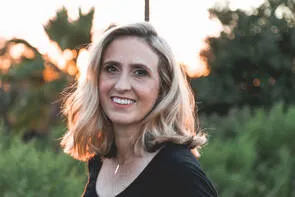There is a lot of confusion surrounding the difference between a deep plane facelift procedure and a SMAS facelift. Both facelift procedures provide a rejuvenating effect, but the techniques used differ, and the results may vary.
We take a look at the two anti-ageing surgical procedures and how they can help you look younger. It is crucial to choose a GMC specialist registered plastic surgeon for these procedures to ensure the best possible outcomes and safety, especially when considering advanced methods like the deep plane technique. The deep plane approach is considered an advanced facelift technique, offering more comprehensive and long-lasting results compared to a traditional facelift, which typically uses less invasive methods and may not address deeper facial structures as effectively. Advanced methods like the deep plane technique often involve facial ligament release for enhanced results.
Both SMAS and deep plane facelifts are advanced forms of cosmetic surgery, and choosing the right procedure is an important decision within the field of cosmetic surgery.
Understanding Facelift Surgery
Facelift surgery, also known as rhytidectomy, is a popular cosmetic procedure designed to reduce the visible signs of facial ageing in the face and neck that result from the natural aging process, such as loose skin, deep creases, and changes in facial structure. This surgical procedure can address issues such as sagging skin, deep creases, and loss of muscle tone, helping patients achieve a more youthful and refreshed appearance. The natural aging process leads to changes in the skin, fat, and deeper tissues, contributing to facial ageing.
There are various techniques used in facelift surgery, each with its own unique approach and benefits. Two of the most commonly discussed methods are the SMAS facelift and the deep plane facelift. Understanding offers significant, long-lasting aesthetic improvements by targeting deeper anatomical structures, including the SMAS layer and facial retaining ligaments, and involves tissue repositioning for enhanced results.
What Is a Deep Plane Facelift surgery?
A deep plane facelift procedure is a surgical technique that involves making incisions in natural contours to minimize scarring, addressing deeper facial tissues for enhanced results, and ensuring longevity of the effects. The procedure involves dissection beneath the SMAS into the deeper layer and deeper SMAS layer, allowing access to underlying tissues such as the SMAS, platysma muscle, and facial ligaments for more effective lifting and repositioning. The deep plane technique also aids in volume restoration, enhancing facial volume and addressing volume loss for overall facial rejuvenation.
The deep plane technique allows for tension-free skin closure and provides significant, long-lasting aesthetic improvements by targeting deeper anatomical structures. It removes excess fat that can accumulate in the jowls, neck, and cheeks, as well as skin and muscle from the lower face and neck, typically used to improve the appearance of sagging skin, wrinkles, and jowls.
What Is a SMAS Facelift?
A SMAS facelift is a surgical procedure that removes excess facial fat, excess skin, and muscle from the lower face and neck.
It is typically used to improve the appearance of sagging skin, wrinkles, and jowls. However, unlike a deep plane facelift, a SMAS facelift also involves tightening the SMAS layer (a thin layer of connective tissue that lies beneath the skin).
The Differences Between a Deep Plane Facelift and a SMAS Facelift
There are several key differences between a deep plane facelift and a SMAS facelift:
-
The depth of the incision: A deep plane facelift involves making a deeper incision than a SMAS facelift. This allows for more extensive tissue removal.
-
The approach to tightening the SMAS layer: An SMAS facelift involves drawing the SMAS layer using sutures. A deep plane facelift does not involve tightening the SMAS layer; instead, it relies on undermining (or separating) this layer to achieve results.
-
The level of anaesthesia: A deep plane facelift typically requires general anaesthesia, while our surgeons can perform a SMAS facelift using local anaesthesia or general anaesthesia.
-
The recovery time: A deep plane facelift typically requires longer time than a SMAS facelift.
-
The results: a deep plane facelift produces similar results to a SMAS facelift. The deep plane facelift is more extensive and can carry more risk and a longer recovery. As an advanced alternative to the traditional facelift, the deep plane face lift targets deeper facial anatomy and provides longer-lasting, more natural results, especially in the midface and neck, compared to the more superficial approach of a traditional facelift.
It is advised to discuss the options with our plastic surgeons who will give you honest advice on the best option for your facial structure, facial shape, and skin laxity, including the presence of loose skin. Deep plane facelifts require significant expertise and can result in substantial improvements in areas like the jowls and neck. The deep plane technique allows for more natural and effective results by targeting deeper anatomical structures, including the SMAS layer and facial retaining ligaments. Additionally, the deep plane facelift offers enhanced volume restoration, leading to more natural and effective results.
Potential complications of these procedures can include delayed wound healing and visible scarring, depending on individual factors such as blood supply, previous skin treatments, smoking, and the surgical technique used.
Depth of Dissection
A deep plane facelift is a surgical procedure that involves dissecting beneath the superficial musculoaponeurotic system (SMAS) layer to access the deeper layers of facial tissue. In this advanced facelift technique, the surgeon enters the deep plane face by working in the space between the SMAS and deeper tissues such as the platysma muscle, allowing for more comprehensive midface and jawline rejuvenation. This approach addresses the underlying structural issues that contribute to facial ageing, including the release, elevation, and repositioning of the platysma muscle to restore youthful facial contours. By working at a deeper level, the deep plane facelift can achieve more significant and longer-lasting results compared to a traditional SMAS facelift, which only addresses the superficial layers of the face.
The removal or redraping of redundant skin is also a key component of the procedure, helping to eliminate excess, sagging skin for a smoother, more youthful appearance. This deeper dissection is a key factor in the effectiveness of the deep plane facelift technique, making it a preferred choice for those seeking extensive facial rejuvenation. The deep plane technique is a key factor in the effectiveness of this approach, allowing for tension-free skin closure and more natural results.
Book a deep plane facelift consultation to find out if you are suitable.
Areas of Focus
The area of focus for a deep plane facelift is the mid-to-lower face, including the cheeks, jowls, and neck.
In the midface, the buccal fat pad plays a significant role in facial volume and contour; during a deep plane facelift, the buccal fat pad may be repositioned or partially excised to address midface hollowing or ptosis. This procedure is designed to restore a more youthful and rested appearance to the face, addressing the signs of ageing such as sagging skin, loss of volume, and decreased definition.
The deep plane facelift technique is particularly effective in addressing the nasolabial folds, marionette lines, and jowling, which are common concerns for patients undergoing facelift surgery. While the deep plane facelift primarily targets the mid-to-lower face, the upper face—such as the forehead and brow—may require additional procedures for full facial rejuvenation. By targeting these specific areas, the deep plane facelift can provide a more comprehensive and natural-looking rejuvenation. The deep plane technique is particularly effective in addressing these areas, providing significant and long-lasting improvements.
Benefits of Deep Place Facelift - Natural looking results
To find out if you are suitable for a Deep plane face lift contact us today.
The deep plane facelift technique is widely regarded as one of the most advanced facelift techniques available for facial rejuvenation. By targeting the deeper layers of facial tissues, including the superficial musculoaponeurotic system (SMAS) and the platysma muscle, this surgical procedure delivers transformative results that go beyond surface-level improvements. Patients who undergo a deep plane facelift procedure often experience a dramatic restoration of youthful appearance, with enhanced facial contours, a reduction in deep wrinkles, and a noticeable improvement in facial shape. This advanced facelift technique is particularly effective at addressing sagging skin and volume loss, helping to restore the natural contours of the face and create a more youthful, refreshed look.
One of the standout benefits of the deep plane facelift is its ability to provide long-lasting results. By repositioning the deeper tissues and supporting structures of the face, the deep plane facelift procedure can help patients look 10 to 15 years younger, with results that endure for many years. The technique’s focus on the deeper layers of the face means that improvements are not only more significant but also more natural in appearance, avoiding the overly tight or “pulled” look sometimes associated with less advanced facelift techniques. For those seeking a comprehensive solution to facial aging, the deep plane facelift offers a powerful way to achieve a more youthful appearance and improved facial shape.
Natural-Looking Results
One of the primary benefits of a deep plane facelift is the natural-looking results it provides. By addressing the deeper layers of facial tissue, this procedure can restore a more youthful and rested appearance to the face without the “pulled” or “windblown” look that can be associated with traditional facelifts. The deep plane facelift technique is designed to create a more subtle and natural-looking rejuvenation, which is ideal for patients who want to look refreshed and revitalized without appearing “done.” This approach ensures that the facial features are harmoniously enhanced, resulting in a more youthful and balanced appearance that can last for many years. The deep plane technique ensures that the facial features are harmoniously enhanced, resulting in a more youthful and balanced appearance.
Longer Lasting Results
A deep plane facelift is renowned for its ability to deliver longer-lasting results compared to other facelift techniques. By targeting the deeper SMAS layer and underlying tissues, including the SMAS and platysma muscles, this surgical procedure addresses the root causes of facial aging rather than just the surface-level symptoms. This comprehensive approach helps restore the natural contours and youthful appearance of the face, resulting in a more refreshed and enduring look. The deep plane technique involves tissue repositioning at the level of the underlying tissues, which contributes to the longer-lasting results.
One of the standout benefits of the deep plane facelift technique is its ability to provide improved facial definition and contours. By repositioning the deeper tissues and addressing lax skin, the procedure reduces the appearance of fine lines and wrinkles, enhancing overall facial rejuvenation. The results are natural-looking, avoiding the “pulled” or “stretched” appearance often associated with traditional facelifts.
In addition to its longevity, the deep plane facelift offers several other advantages:
-
Enhanced facial rejuvenation and restoration
-
Natural-looking results that blend seamlessly with your facial features
-
Significant improvement in areas like the jowls and neck
The deep plane facelift is a highly effective surgical procedure that can provide longer-lasting results and a more youthful and natural appearance.
To find out more about deep plane and SMAS and our exeprt facelft surgeons contact us today.
What to expect from a Deep Plane Facelift
A deep plane facelift is a comprehensive surgical procedure designed to reposition the deeper tissues of the face, restoring a more youthful and natural appearance. Typically performed under general anesthesia, the procedure can take several hours to complete.
During the surgery, the surgeon makes incisions in the hairline and around the ears. They then carefully dissect the deeper facial tissues to reposition the SMAS and platysma muscles. Excess skin and tissue are removed to create a more defined and contoured appearance.
Post-surgery, patients can expect some swelling, bruising, and discomfort, which can be managed with prescribed pain medication and following post-operative care instructions. The recovery time varies, but most patients can return to their normal activities within 2-3 weeks.
Key outcomes of a deep plane facelift include:
-
Improved facial definition and contours
-
Reduced appearance of fine lines and wrinkles
-
Enhanced facial rejuvenation and restoration
-
Natural-looking results that do not appear “pulled” or “stretched”
Overall, a deep plane facelift is an effective surgical procedure that can provide longer-lasting results and a more youthful and natural appearance, making it a popular choice for those seeking significant facial rejuvenation.
To learn more about a Deep plane or SMAS get in touch.
Potential Risks and Complications
While the deep plane facelift technique offers impressive benefits, it is important to be aware of the potential risks and complications associated with this surgical procedure. As with any facelift surgery, there is a risk of bleeding, infection, and delayed wound healing. Because the deep plane facelift involves working in close proximity to the facial nerve, there is also a small risk of facial nerve injury, which could affect facial movement or sensation. However, when the procedure is performed by a board certified plastic surgeon with extensive experience in deep plane facelift surgery, these risks are significantly reduced.
Other potential complications include visible scarring, although the deep plane facelift technique is designed to minimize scarring by placing incisions in natural facial contours. In rare cases, patients may require revision surgery to achieve their desired results. It is essential to have a thorough discussion with your surgeon about all possible risks and to follow their pre- and post-operative instructions carefully to ensure the safest and most successful outcome. By choosing an experienced, GMC specialist registered plastic surgeon, patients can feel confident in the safety and effectiveness of their deep plane facelift procedure.
Who is the Best Candidate for these Facelift Procedures?
A deep plane facelift and a SMAS facelift are suitable for anyone looking to reduce signs of ageing. However, they are better suited to patients in good general health and have sagging skin or facial wrinkles.
These procedures target deeper layers of facial anatomy, including the facial muscles, to achieve more natural and long-lasting rejuvenation results. The deep plane technique targets deeper layers of facial anatomy, providing more natural and long-lasting rejuvenation results.
The best age for a deep plane or SMAS facelift is typically between 40-60 years old, although we do operate on older patients in their 70s for facelifts and blepharoplasty.
Regardless of your chosen procedure, it is important to meet with one of our qualified facial plastic surgeon at Kensington Medical to discuss your individual goals and expectations. They can help you determine which approach best suits you facial structure and ensure that you get the results you’re looking for.
What to Discuss with Your Surgeon
A thorough consultation with your surgeon is essential for a successful deep plane facelift procedure. Be sure to discuss the following topics:
-
Your Goals and Expectations: Clearly communicate your desired outcomes and ask how the deep plane facelift technique can help you achieve them.
-
Risks and Complications: Review the potential risks, including those specific to the deep plane facelift, such as facial nerve injury and delayed wound healing.
-
Recovery Process: Ask about the expected recovery timeline, post-operative care, and when you can resume normal activities.
-
Surgeon’s Experience: Inquire about your surgeon’s qualifications, certifications, and experience with the deep plane facelift technique and other facelift procedures.
-
Combining Procedures: Discuss the possibility of combining your deep plane facelift with other facial procedures, such as eyelid surgery or fat grafting, for more comprehensive facial rejuvenation.
By addressing these key points, you can feel confident and well-prepared for your deep plane facelift surgery, ensuring the best possible outcome for your facial rejuvenation journey.
FAQs
What is the recovery time for a deep plane or SMAS facelift?
The recovery time for a deep plane facelift surgery is typically 4 to 8 weeks, while the recovery time for a SMAS facelift is shorter, at 2 to 6 weeks. During this period, you may experience swelling and bruising. The deep plane technique allows for tension-free skin closure and provides significant, long-lasting aesthetic improvements. Your surgeon will provide more information on the recovery process, including what to expect in terms of patient sensations post-surgery and how to manage any discomfort.
Related Reading
Facelift Surgery Considerations
When considering facelift surgery, it’s essential to evaluate several critical factors to determine the best approach for your individual needs and goals. One of the most important considerations is the type of facelift procedure that will provide the desired results.
A deep plane facelift is a highly effective option for those seeking longer-lasting results and a more youthful and natural appearance. This technique offers enhanced volume restoration, leading to more natural and effective results. However, it may not be suitable for everyone. Consulting with a board-certified plastic surgeon is crucial to determine if this procedure aligns with your specific needs.
Key considerations when evaluating a deep plane facelift include:
-
The extent of facial ageing and the severity of signs of aging
-
The presence of lax skin contributing to facial sagging
-
The overall health and well-being of the patient
-
Individual goals and expectations for the procedure
-
Potential risks and complications associated with the surgical procedure
By carefully assessing these factors and consulting with a qualified plastic surgeon, you can make an informed decision about whether a deep plane facelift is the right choice for you. This ensures that the chosen procedure aligns with your facial structure and aesthetic goals, leading to optimal results.
Are there any risks associated with a deep plane or SMAS facelift?
Like all surgical procedures, a deep plane face lift or SMAS facelift carries certain risks. These include bleeding, infection, loss of sensation in the face, and nerve damage. Here at Kensington Medical your plastic surgeon will discuss these risks with you in consultation.
Deep plane Facelift Recovery and Aftercare
Recovery from a deep plane facelift typically takes 2-4 weeks. During this time, it’s essential to follow a post-operative care plan to ensure a smooth and comfortable recovery. Proper aftercare is crucial to achieving the best possible results and minimising any potential complications. Follow-up appointments are important, as they allow your surgeon to monitor healing and perform necessary steps such as suture removal, which is a key component of post-operative care.
Can I combine a deep plane or SMAS facelift with other procedures?
Yes, a deep plane facelift or SMAS facelift can be combined with other facial cosmetic procedures such as eyelid surgery (blepharoplasty), brow lift, neck lift, and fat transfer. Combining these procedures can help you achieve more comprehensive results. It is best to mention this at time of booking your consultation. During your consultation with our GMC specialist registered plastic surgeons they will examine your face and listen to what you want to achieve. This will ensure they can give you the correct treatment plan to achieve the best results.
Which procedure has less scarring?
A SMAS facelift can result in less scarring than a deep plane facelift. However it really does depend on the expertise of your facial plastic surgeon. Your surgeon will make the incision in an area of the face that is not visible, and they will use care to ensure minimal scarring. If you are interested in a facelift the best option will be to discuss what you want to achieve. Our plastic surgeons can then advise if a Smas face lift or a deep plane will give you the results you are after.
How long do the results of a deep plane or SMAS facelift last?
A deep plane or SMAS facelift results typically last for 10 to 15 years, depending on your age, skin type, and lifestyle habits. Looking after your skin, wearing a SPF 50 every day, avoiding smoking and drinking too much alcohol, concentrating on a healthy diet and regular exercise can help to maintain your youthful appearance for longer.
Is a deep plane or SMAS facelift right for me?
The best way to find out if a deep plane or SMAS facelift is right for you is to book a consultation with an experienced plastic surgeon at Kensington Medical. They can evaluate your specific goals, examine your face and after a discussion with you recommend the best approach for you.
At Kensington Medical, we want to ensure that your facelift experience is safe and successful. Our London based surgeons are highly experienced in performing facelifts and neck lifts and will work with you to help you achieve a beautiful, natural-looking result.
Mr David Gateley is a specialist GMC specialist registered plastic surgeon who has carried out thousands of facial procedures. His experience spans all types of facelifts and neck lifts along with blepharoplasty. He has held a senior position within St. Georges NHS hospital as head of the plastics department and has taught many plastic surgeons.
Mr Paul Tulley is specialist GMC specialist registered Consultant Plastic, Reconstructive, and Cosmetic Surgeon practicing at Kensington Medical in Harley Street, London and the Southeast of the UK. His experience in facial plastic surgery encompasses a comprehensive range of cosmetic surgeries, notably facial rejuvenation procedures such as deep plane.
Mr. Naveen Cavale is an experienced GMC specialist registered Consultant Plastic and Reconstructive Surgeon with a wealth of knowledge in his field. He has a special interest in facial surgery most notably Deep plane and SMAS facelifts including lip lift surgery.
Contact us today to book a Deep plane or SMAS consultation or phone to find out more.











